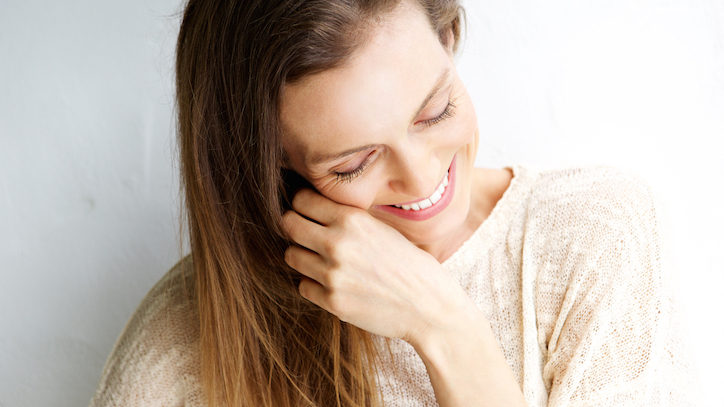
- Global
Get non-surgical solutions for today's top aesthetic concerns with Venus Treatments. Join thousands of satisfied patients worldwide!
- Loading...
- All Regions
Get non-surgical solutions for today's top aesthetic concerns with Venus Treatments. Join thousands of satisfied patients worldwide!

The focus for most anti-aging treatments tends to circle around wrinkle-reducing creams and sun care for the face and neck. Unfortunately, the chest and hands—two areas highly exposed to the elements—are often forgotten. Over time, the neglect is bound to show and voila, more sun spots on your chest and hands pop up.
For the most part, these brown spots are harmless, though studies do show that they impact perception of age, meaning others are likely to estimate you’re older than your birth certificate says. This is the reason Hollywood makeup artists will often paint sun spots on an actor’s hands, face, or chest to instantly age their appearance. Unlike those actors, though, you can’t simply wash off your sun spots, but we have you covered. Keep reading to discover how you can remove sun spots from your chest and hands.
Prevention at this stage—assuming the title of this article is what led you here—is likely the last thing on your mind, but it’s a necessary first step to halt damage and ensure that faded sun spots stay that way. While there may be other factors that increase one’s likelihood of developing brown spots, sun exposure is the usual culprit. It seems silly to keep repeating ourselves but this really is the best anti-aging tip we all need to follow but many of us just don’t: wear sunscreen! Regardless of the season, the weather, how long you’ll be outside, or any other excuse you’ve considered to skip the SPF, if you’re not covering up skin with adequate fabric, you need to apply sunscreen. This is especially true for the face, chest, and hands, as they’re considered high exposure areas. You may not see the results today, but you’ll be happy you did it a decade from now, when sun spots usually start to show their true color. Apply a sunscreen with a minimum SPF 15 (higher if you tend to burn easily) and reapply every two hours, or after swimming, excessive sweating, or washing your hands. If you’re prone to forgetfulness, input a reminder on your phone or in your day planner, and stash extra sunscreen in your purse, car, or desk to ensure you’re never without it.
Some all-natural beauty enthusiasts swear by the use of fresh lime or lemon slices to gradually fade sun spots and pigmentation on the chest or hands. Patience and the ability to form a habit rather easily is key in seeing results with this method, as it generally takes several months to work effectively. Yogurt is another at-home remedy touted for its ability to help repair damaged skin. Yogurt’s lactic acid content helps to gently strip away the top layer of skin, similar to a facial peel, promoting new cell turnover and eventually fading sun spots. Another option may be the application of natural materials that contain vitamins C and E, which are known for their ability to fight free radical damage caused by the sun and other environmental factors.
At this time, all-natural at-home treatments for sun spots are mostly only supported by anecdotal evidence. As well, some of the more acidic DIY treatments, like lemons, risk a bleaching effect on those with darker skin tones, so it’s best to consult a dermatologist before following through with any at-home treatments for sun spots.
The most effective topical treatments for sun spots on the chest and hands feature hydroquinone (up to 2% concentration over-the-counter, or 4% concentration by prescription) teamed up with a retinoid for exfoliation and improved cell turnover. A bleaching agent, hydroquinone must be applied carefully to sun spots alone using a precise application tool, such as a cotton wand or small makeup application brush like an eyeliner brush. For those weary of hydroquinone, topical anti-aging creams and serums that contain soy, kojic acid, niacinamide, ellagic acid, or liquorice may help to break up age spots and discoloration, and even out skin tone.
An important note: Avoid all skin lightening products or sun spot treatments containing mercury at all costs. These can cause serious health problems for you and anyone you come into contact with. While there are regulations on these products, a study by dermatologists of 549 skin lighteners purchased from U.S. store shelves or ordered online found that 12% of those available in the U.S. contained some level of mercury—and half of that 12% were found on U.S. store shelves. Aside from keeping an eye out for ingredients with “mercuric” in the name, you’ll also want to avoid calomel, cinnabaris, hydrargyri oxydum rubrum, and quicksilver.
Chemical peels are one option for treating age spots on the chest but they may not be the best option for hands. Chemical peels utilize an acid to remove the outer layer of the skin down to the sun spots. This outer layer of skin then peels away and new skin is generated, effectively repairing previous skin damage through the proliferation of new skin cells. For best results, multiple treatments are required. Note that those with darker skin tones are most at risk of complications.
For those with lighter skin tones, Intense Pulsed Light (IPL) photofacial treatments for the chest and hands may be your best bet. Often referred to as “photofacials,” these IPL treatments can also be utilized elsewhere on the body, like the chest and hands, to reduce the appearance of pigmentation and sun damage. Delivering bursts of light through multiple layers of the skin, these treatments target and break down the pockets of melanin that form sun spots while leaving surrounding tissue undamaged for a clearer, more even-toned complexion.
For those looking to fade sun spots on the face and chest, complete skin renewal treatments that offer three different aesthetic treatments in one session—such as photofacial, anti-aging, and skin resurfacing—may fit the bill. Combining advanced radio frequency and IPL technologies into one complete three-step session, these treatments are the ultimate multi-taskers, fading sun spots alongside other signs of sun damage and premature aging, like fine lines and wrinkles, enlarged pores, textural irregularities, visible veins, and more.
While sun spots are rarer for those with a little more melanin in their skin, treating the dark spots that do pop up on the face, chest, or hands can be much trickier. For those considering IPL treatments, know that you may be at higher risk of treatment complications depending on your Fitzpatrick skin type. To be safe, consult a certified treatment provider before committing to any treatment to ensure you’re making the right choice for your skin. A certified provider will be able to properly define your skin type, treat a discrete test patch, and monitor your skin’s reaction to ensure it’s safe before beginning a complete treatment.
To learn more about the benefits of photofacial treatments for removing sun spots on the chest and hands, or to discuss whether you’re an ideal candidate for these treatments, locate a certified photofacial treatment provider near you today using the search field below.
Find a certified Venus Treatments provider near you today who specializes in today’s top aesthetic medical solutions.



Search below to find a provider near you and to learn about our non-surgical aesthetic treatments with ARTAS®, NeoGraft®, Venus Bliss™, Venus Blilss MAX™, Venus Versa™, Venus Legacy™ Venus Versa™ Pro, Venus Velocity™, Venus Viva™ MD, and Venus Glow™.
For more information call: (888) 907-0115 // [email protected] // 235 Yorkland Blvd., Suite 900, Toronto, ON, M2J 4Y8 Canada
REGULATORY CLEARANCES [ More ]
Venus Bliss™ is cleared by the FDA and licensed by Health Canada for non-invasive lipolysis of the abdomen and flanks in individuals with a Body Mass Index (BMI) of 30 or less, with the diode laser applicators. The (MP)2 applicator is cleared by the FDA for temporary reduction in the appearance of cellulite, and licensed by Health Canada for temporary increase of skin tightening, temporary circumferential reduction, and temporary cellulite reduction. Venus Bliss™ has CE Mark as a non-invasive medical aesthetic device enabling a comprehensive approach leading to body contouring, addressing fat reduction, skin tightening, circumference reduction, and cellulite reduction.
Venus Versa™ is cleared by the FDA, licensed by Health Canada, and has CE Mark as a multi-application device intended to be used in aesthetic and cosmetic procedures. The SR515 and SR580 applicators are cleared by the FDA, licensed by Health Canada, and have CE Mark for the treatment of benign pigmented epidermal and cutaneous lesions and treatment of benign cutaneous vascular lesions. The HR650/HR650XL and HR690/HR690XL applicators are cleared by the FDA, licensed by Health Canada, and have CE Mark for the removal of unwanted hair and to effect stable long-term or permanent hair reduction for Fitzpatrick skin types I-IV. The AC Dual applicator is cleared by the FDA, licensed by Health Canada, and has CE Mark for the treatment of acne vulgaris. The DiamondPolar™ and OctiPolar™ applicators on the Venus Versa™ system are cleared by the FDA for non-invasive treatment of moderate to severe facial wrinkles and rhytides on females with Fitzpatrick skin types I-IV. The DiamondPolar™ applicator is licensed by Health Canada and has CE Mark for non-invasive treatment of moderate to severe facial wrinkles and rhytides on females with Fitzpatrick skin types I-IV. The OctiPolar™ applicator on the Venus Versa™ system is licensed by Health Canada and has CE Mark for temporary body contouring via skin tightening, circumferential reduction, and cellulite reduction. The NanoFractional RF™ (Viva) applicator is cleared by the FDA, licensed by Health Canada, and has CE Mark for dermatological procedures requiring ablation and resurfacing of the skin.
NeoGraft® is cleared by the FDA, licensed by Health Canada and has CE Mark with indication for use in suction-assisted follicular extraction and re-implantation. It is an auto-graft system and can be used on both male and female patients.
ARTAS iX™ is cleared by the FDA, licensed by Health Canada and has CE Mark with indication for use for harvesting hair follicles from the scalp in men diagnosed with androgenic alopecia (male pattern hair loss) who have black or brown straight hair. ARTAS iX™ is intended to assist physicians in identifying and extracting hair follicular units from the scalp during hair transplantation; creating recipient sites; and implanting harvested hair follicles.
Venus Legacy™ is cleared by the FDA for the non-invasive treatment of moderate to severe facial wrinkles and rhytides in females with Fitzpatrick skin types I-IV with the OctiPolar™ and DiamondPolar™ applicators, and temporary reduction in the appearance of cellulite with the 4D Body (LB2) and 4D Face (LF2) applicators. It is licensed by Health Canada and has CE Mark for the temporary increase of skin tightening, temporary circumferential reduction, temporary cellulite reduction, and temporary wrinkle reduction.
Venus Velocity™ is cleared by the FDA, licensed by Health Canada and has CE Mark for hair removal, permanent hair reduction (defined as the long-term stable reduction in the number of hairs re-growing when measured at 6, 9 and 12 months after the completion of a treatment regimen), and the treatment of pseudofolliculitis barbae for all Fitzpatrick skin types.
Venus Fiore™ received regulatory approval in Israel for aesthetic and functional treatment of the vagina, labia and mons pubis. Venus Fiore™ is available for sale in India, Hong Kong, and other selected Asian countries.
Venus Viva™ is cleared by the FDA, licensed by Health Canada, and has CE Mark for dermatological procedures requiring ablation and resurfacing of the skin. The DiamondPolar™ applicator is cleared by the FDA, licensed by Health Canada and has CE Mark for the treatment of moderate to severe wrinkles and rhytides in Fitzpatrick skin types I-IV.
Venus Freeze Plus™ is cleared by the FDA for the non-invasive treatment of moderate to severe facial wrinkles and rhytides in females with Fitzpatrick skin types I-IV. It is licensed by Health Canada for temporary skin tightening, and temporary reduction in the appearance of cellulite on the abdomen and flanks, using the DiamondPolar™ and OctiPolar™ applicators. The DiamondPolar™ applicator on Venus Freeze Plus™ has CE Mark for the non-invasive treatment of moderate to severe facial wrinkles and rhytides, and the increase of skin tightening, temporary circumferential reduction, and cellulite reduction with the OctiPolar™ applicator.
Venus Heal™ is licensed by Health Canada and can be used for the treatment of both acute and chronic disorders of the musculoskeletal system, such as muscle spasms, back pain, and soft tissue injuries, and results in effects such as pain relief, myorelaxation, increase of local blood circulation, and edema reduction. In the U.S., Venus Heal™ is cleared by the FDA for the relief of minor muscle aches and pain, relief of muscle spasm, and temporary improvement of local blood circulation. These indications enable the treatment of certain soft tissue injuries and conditions.
Venus Glow™ is cleared by the FDA as a Class I motorized dermabrasion device. It provides a dermal rejuvenation treatment that works to open up and deep-clean pores. Venus Concept is the exclusive distributor for Venus Glow™.
Venus Epileve™ is licensed by Health Canada and has CE Mark for hair removal, permanent hair reduction (defined as the long-term stable reduction in the number of hairs re-growing when measured at 6, 9 and 12 months after the completion of a treatment regimen), and the treatment of pseudofolliculitis barbae for all Fitzpatrick skin types. Venus Epileve™ is also CE-Marked for hirsutism.
Venus Freeze™ is cleared by the FDA for the non-invasive treatment of moderate to severe facial wrinkles and rhytides in females with Fitzpatrick skin types I-IV. It is licensed by Health Canada for temporary skin tightening, and temporary reduction in the appearance of cellulite on the abdomen and flanks, using the DiamondPolar™ and OctiPolar™ applicators. The DiamondPolar™ applicator on Venus Freeze™ has CE Mark for the non-invasive treatment of moderate to severe facial wrinkles and rhytides, and the increase of skin tightening, temporary circumferential reduction, and cellulite reduction with the OctiPolar™ applicator.
Venus Swan™ is cleared by the FDA for the non-invasive treatment of moderate to severe facial wrinkles and rhytides, and licensed by Health Canada for the non-invasive treatment of cellulite reduction, skin tightening, and temporary reduction in the appearance of stretch marks.
Copyright © 2024 Venus Concept. All rights reserved.
You are entering our website. For other countries/regions and language options, please click the SELECT A DIFFERENT REGION button below.
SELECT A DIFFERENT REGIONAre you looking to get a treatment? Please visit our patient website to learn more.
Click HereUnsure which aesthetic treatment is right for you? Take this quick and easy quiz to discover treatments that suit your needs.
Get Started